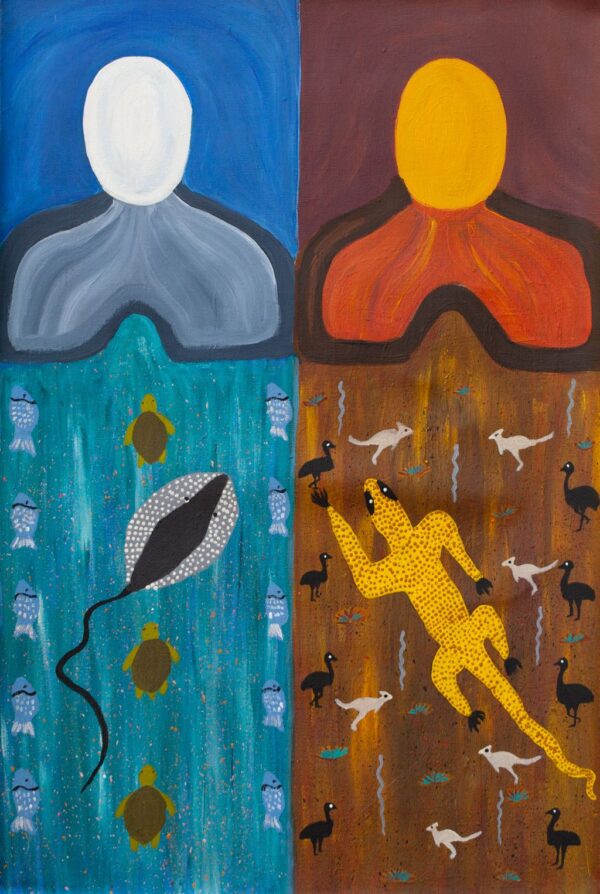$580.00 Original price was: $580.00.$348.00Current price is: $348.00.
1 in stock
Lily Long
Acrylic on Canvas
36 x 46 cm
Year: 2024
24-1116
Minyipuru
“The Seven Sisters came up to Parnngurr rockhole from the Canning Stock Route. They left behind marks in the hills near Parnngurr. They stopped at the rockhole a little while before moving on. That old man, Yurla, he met them at Parnngurr and kept going to the central desert, chasing the sisters.”
– Jatarr Lily Long
Parnngurr, now the locale of a remote Aboriginal community, has always been a significant site for the Martu. A permanent water source and a site within the epic Jukurrpa (Dreaming) story of the Minyipuru (Jakulyukulyu, Seven Sisters), historically many families would gather here to meet for important occasions.
Parnngurr features in the Minyipuru journey at a point in which the sisters separated in several directions as they fled in panic from Yurla. Some of the sisters arrived at Parnngurr as they travelled south west, whilst the remainder of the sisters travelled east to Pangkapirni. At Parnngurr, the Minyipuru sit down to rest on top of a hill overlooking present day Parnngurr community following an important event in women’s law . From Parnngurr the songline extends south east to Kaalpa (Kalypa, Canning Stock Route Well 23) before leaving Martu Country.
Minyipuru is a central Jukurrpa narrative for Martu, Ngaanyatjarra, Pitjantjatjara and Yankunytjatjara people that is associated with the seasonal Pleiades star constellation. Relayed in song, dance, stories and paintings, Minyipuru serves as a creation narrative, a source of information relating to the physical properties of the land, and an embodiment of Aboriginal cultural laws. Beginning in Roebourne on the west coast of Western Australia, the story morphs in its movement eastward across the land, following the women as they walk, dance, and even fly from waterhole to waterhole. As they travel the women camp, sing, wash, dance and gather food, leaving markers in the landscape and creating landforms that remain to this day, such as groupings of rocks and trees, grinding stones and seeds. During the entirety of their journey the women are pursued by a lustful old man, Yurla, although interactions with other animals, groups of men, and spirit beings are also chronicled in the narrative.



Sign up to Martumili Artists’ mailing list to receive artist news, special offers, and shop updates.




Martumili Artists warns visitors that our website includes images and artworks of Artists who have passed away which may cause distress to some Indigenous people.
Martumili Artists acknowledges the Nyiyaparli and Martu people as the Traditional Owners of the land we live and work on. We also acknowledge the Traditional Owners throughout our country and our Elders; past, present and emerging.